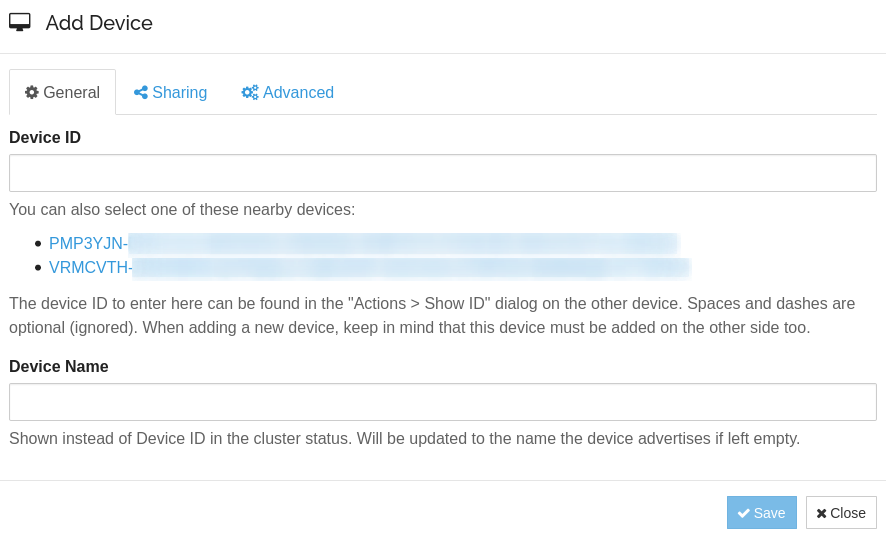


To ensure the packages are always used when installing and updating Syncthing, create the following Pin-Priority in the /etc/apt/preferences.d/ directory. Kali's repositories offer an older version of Syncthing. echo 'deb syncthing stable' > /etc/apt/sources.list curl -s | sudo apt-key add -Īdd the Syncthing repository to your APT sources using the echo command. These are used to securely sign the packages and help prevent attackers from manipulating the Syncthing packages. Then, import the Syncthing release PGP keys.
#SYNCTHING INSTALL UBUNTU UPDATE#
apt-get update & apt-get install apt-transport-https -VĪpt-transport-https is already the newest version (1.6.3).Ġ upgraded, 0 newly installed, 0 to remove and 406 not upgraded. This will allow you to securely fetch packages and updates from the Syncthing developers. Otherwise, Kali and Ubuntu users can follow along verbatim.įirst, ensure the apt-transport-https package is installed using the below apt-get command. The only variation is in Step 2, where I make note of the difference. The installation process for Kali (Debian) and an Ubuntu VPS are about the same. Step 1: Install Syncthing in Kali & Ubuntu
#SYNCTHING INSTALL UBUNTU PASSWORD#
Between a local Windows machine and a MacBook, we can securely sync browser bookmarks, password manager files, OS backups, media, and much more. The uses for Syncthing aren't limited to this scenario. You're essentially removing the middleman (Dropbox) and syncing sensitive files directly between your computers. There's no central server that might be compromised (legally or illegally). With Syncthing, none of your data is ever stored anywhere else other than on your computers. Syncthing, created by Jakob Borg, is a cross-platform, private, lightweight file-syncing (Dropbox) alternative. To mitigate these risks, we'll use a secure, open source, and decentralized alternative. Services like Dropbox don't always have the best privacy policies and suffer data breaches just like any other website. Make sure you set up a username and password in the GUI, to keep it safe.Īs library technicians, we can install the package within the Koha hosted VPS/cloud server and make a daily backup to syncthing folder that will sync to entire devices that have been connected to the server.Transferring hundreds of screenshots, webcam recordings, keystroke logs, and audio recordings between your VPS and a local Kali machine can be tricky. Now, you can access the web GUI and add shared folders. Sudo vim /home/ username/.config/syncthing/config.xml Sudo chown root: mv /etc/systemd/systemĪllow connections to the web GUI from network devices Sudo echo "deb syncthing stable" | sudo tee /etc/apt//syncthing.listīy setting up a system, the system will automate the process of starting syncthing You can refer to the command provided by the Syncthing document if you are using any other distribution A VPS/Cloud server/Physical server up with 24*7.Every machine is identified by an ID using that ID lets us connect the devices to each other. Syncthing works, over LAN and over the Internet. In this blog post, I'll show you everything you need in order to get started using Syncthing. It can be used as an alternative to Dropbox/GoogleDrive/MEGA etc. Syncthing is a Private & Secure, Open, and Easy to use program. Syncthing is a fantastic FOSS utility that allows you to easily synchronize all your files and data across all of your computers/devices (macOS/Windows/Linux/Android).


 0 kommentar(er)
0 kommentar(er)
